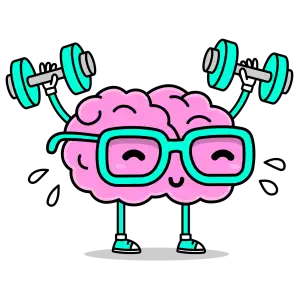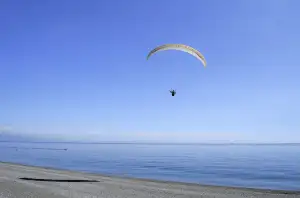Sculpt Your Sides With This Lateral Slide Workout

- What is a lateral slide
- Muscles worked
- Lateral slide variations
- Lateral slide with band
- Lateral slide with weights
- Benefits of lateral slides
- Improve lower body strength
- Enhance lateral stability
- Increase range of motion
- Burn calories
- Suitable for all fitness levels
- Lateral slide mistakes to avoid
- Tips for best results
- Incorporating lateral slides
- Frequently asked questions
What is a lateral slide
A lateral slide is a bodyweight or gym equipment exercise targeting the lateral, or side, muscles of your lower body. It involves stepping sideways in a gliding motion. You can do it using specialized equipment like a lateral trainer machine or with a simple tool like a slider disc.
The lateral slide primarily works your gluteus medius, a muscle on the outer side of your hip responsible for hip abduction (moving your leg away from your body). It also engages your gluteus minimus (another hip abductor), inner and outer thighs, and core muscles for stability.
Incorporating lateral slides into your workout routine offers several benefits. It improves hip stability and strength, crucial for activities like walking, running, and climbing stairs. It also enhances lateral movement control, benefiting athletes in sports requiring side-to-side agility, like basketball, tennis, or soccer.
Moreover, lateral slides can contribute to better core stability and balance. By engaging your core to maintain form during the exercise, you strengthen these muscles, leading to improved overall balance and stability in daily activities.
Muscles worked
The lateral slide primarily targets the muscles in your lower body, specifically the:
Glutes: Your gluteus maximus (the largest muscle in your buttocks) is heavily engaged to power the sideways movement. Your gluteus medius and minimus, responsible for hip stability and abduction (moving your leg away from your midline), are also significantly activated.
Inner and Outer Thighs: Lateral slides effectively engage both your inner and outer thighs. Your adductors (inner thighs) work to pull your leg back towards the midline, while your abductors (outer thighs) control the sideways movement and stabilize your hip.
Hamstrings and Quadriceps: While not the primary movers, your hamstrings (back of your thigh) and quadriceps (front of your thigh) play a supporting role in stabilizing your knee joint and controlling the bending and straightening of your legs during the exercise.
The specific muscles emphasized can vary slightly depending on the type of lateral slide you perform. For instance, using a resistance band increases the activation of your outer thigh muscles, while a slider emphasizes the inner thighs. Regardless of the variation, lateral slides effectively strengthen and tone your lower body, improving stability, balance, and athletic performance.
Lateral slide variations
The lateral slide, a staple in many workout routines, offers a surprising amount of variety. By simply tweaking your stance, adding resistance bands, or incorporating equipment like a slider, you can target different muscle groups and amplify the intensity.
For a beginner-friendly variation, try the standing lateral slide with a resistance band. Place the band around your thighs, just above your knees, and maintain a slight bend in your legs. Step sideways against the band's resistance, feeling the burn in your outer thighs and glutes.
To challenge your core and balance, incorporate sliders. Place one foot on the slider and the other firmly planted on the ground. Initiate the movement by sliding the foot on the slider laterally, keeping your core engaged and back straight. This variation not only works your inner and outer thighs but also enhances stability.
If you're looking to take your lateral slides to the next level, consider adding weight. Hold a dumbbell or kettlebell close to your chest while performing the exercise. The added weight increases the resistance, leading to greater muscle activation and calorie burn.
No matter your fitness level, there's a lateral slide variation for you. Experiment with different stances, resistance levels, and equipment to find what works best for your body and goals. Remember to prioritize proper form and listen to your body to prevent injuries.
Lateral slide with band
The lateral slide with band is a great exercise for strengthening the muscles of the hips, glutes, and inner thighs. It is a low-impact exercise that can be done by people of all fitness levels. To do a lateral slide with band, you will need a resistance band. Place the band around your ankles, just above your knees, or around your thighs, depending on the level of resistance you desire. Make sure the band is snug but not too tight.
Stand with your feet hip-width apart and your toes pointing forward. Engage your core and keep your back straight. Step to the side with one foot, keeping your toes pointed forward and your feet hip-width apart. Lower your body down by bending your knees and pushing your hips back, as if you were sitting in a chair. Keep your back straight and your core engaged. Push off with your outer foot to return to the starting position. Repeat on the other side.
When performing the lateral slide with band, it is important to maintain proper form throughout the exercise. Keep your core engaged and your back straight at all times. Avoid letting your knees cave in as you lower down. You should feel the exercise in your hips, glutes, and inner thighs. If you feel any pain in your knees or back, stop the exercise and consult with a healthcare professional.
Lateral slide with weights
The lateral slide with weights is a great exercise for targeting the muscles of your inner and outer thighs, as well as your glutes. This exercise can be done with a resistance band or a cable machine. To do the lateral slide with a resistance band, start by standing with your feet shoulder-width apart and the band looped around your ankles. Keeping your core engaged and back straight, take a step to the side with your right foot. Then, slowly return to the starting position. Repeat this movement for the desired number of repetitions, then switch sides. To do the lateral slide with a cable machine, start by attaching an ankle strap to the low pulley of a cable machine. Step out to the side until there is tension on the cable. Keeping your core engaged and back straight, slowly slide your leg across your body. Then, slowly return to the starting position. Repeat this movement for the desired number of repetitions, then switch sides.
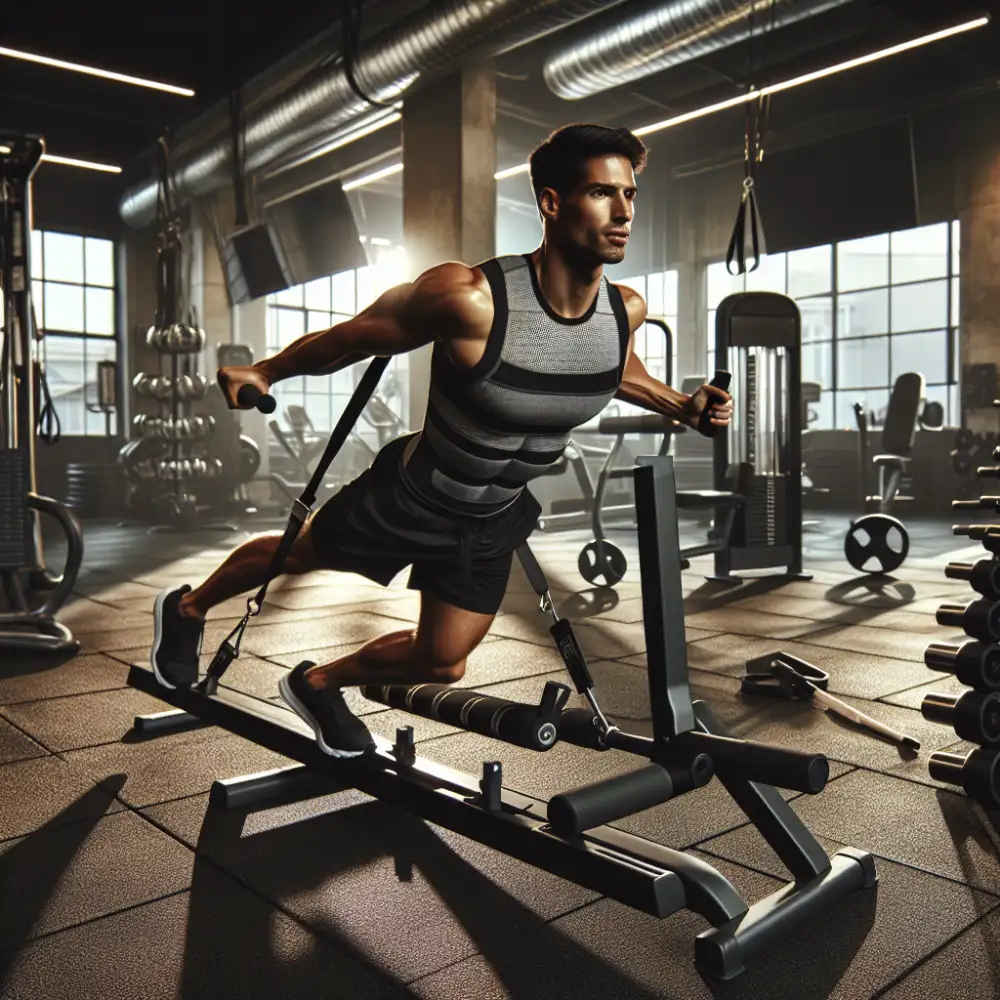
| Feature | Lateral Slide (Exercise) | Lateral Slide (Equipment) |
|---|---|---|
| Muscles Targeted | Glutes, quads, inner and outer thighs | Glutes, quads, inner and outer thighs |
| Cost | No cost (bodyweight exercise) | Varies (can range from $50 to $500+) |
| Space Required | Small (can be done in a limited area) | Moderate (depends on the type of equipment) |
No matter which variation you choose, be sure to keep your core engaged and back straight throughout the entire exercise. You should also avoid letting your knees cave in as you slide your leg to the side. If you find that you are unable to keep your knees from caving in, try using a lighter resistance band or weight.
Here are some tips for getting the most out of the lateral slide with weights:
Start with a light weight or resistance band and gradually increase the weight or resistance as you get stronger.
Focus on keeping your core engaged and back straight throughout the entire exercise.
Avoid letting your knees cave in as you slide your leg to the side.
Breathe deeply throughout the exercise.
Listen to your body and stop if you feel any pain.
The lateral slide with weights is a challenging but effective exercise that can help you to tone your inner and outer thighs, as well as your glutes. Be sure to start with a light weight or resistance band and gradually increase the weight or resistance as you get stronger.
Benefits of lateral slides
Lateral slides are a versatile and effective exercise that can benefit people of all fitness levels. They primarily target the muscles in your hips, glutes, and thighs, helping to improve lower body strength and stability. Lateral lunges engage multiple muscle groups simultaneously, making them a great compound exercise for increasing overall calorie expenditure and boosting your metabolism. By strengthening your hips and glutes, lateral slides can enhance your ability to change direction quickly and efficiently. This is particularly beneficial for athletes in sports that require agility, such as basketball, tennis, or soccer.
Lateral slides can be easily modified to suit different fitness levels. Beginners can start with shorter slides and gradually increase the range of motion as they get stronger. More advanced individuals can increase the resistance by using resistance bands or weights. Incorporating lateral slides into your workout routine can be as simple as performing a few sets of 10-15 repetitions on each side, two to three times a week. As with any exercise, it's essential to use proper form to maximize results and prevent injuries.
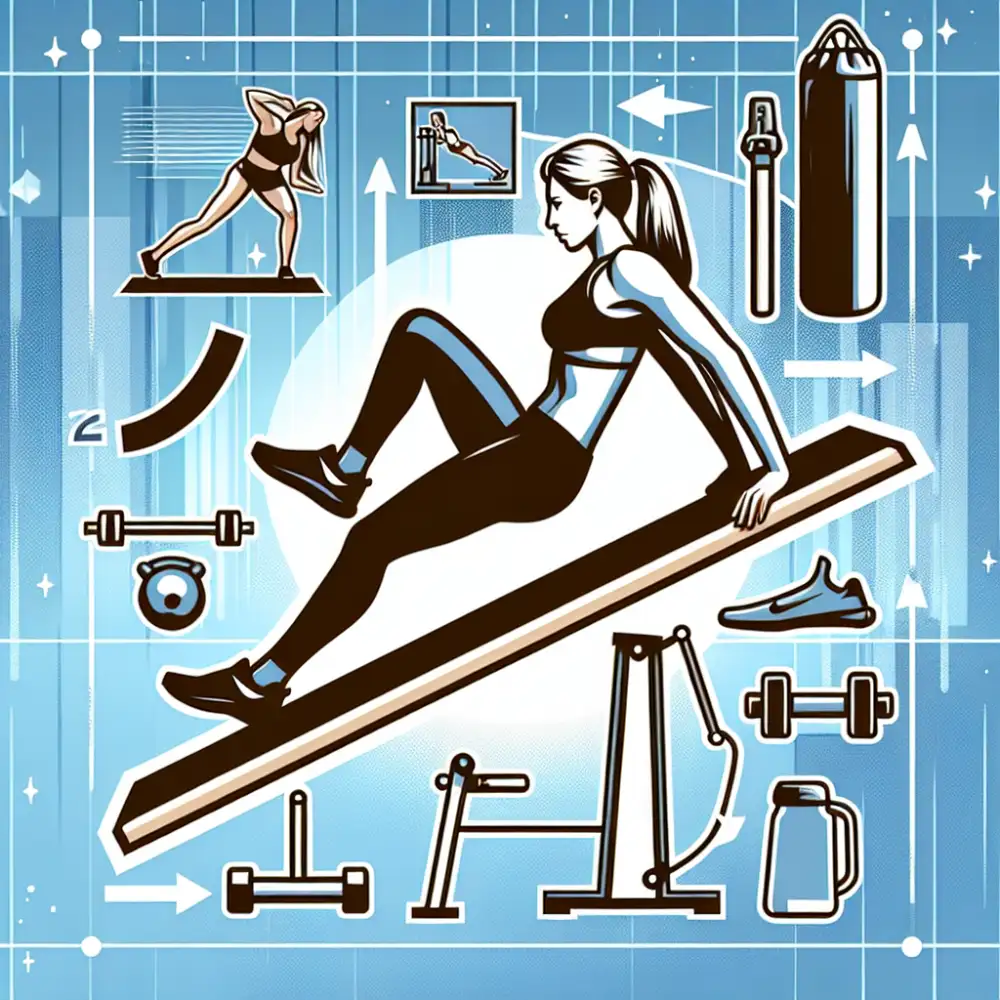

Improve lower body strength
Lateral slides are a great way to improve lower body strength, particularly in the hips, glutes, and thighs. This exercise, often used in sports training, involves moving quickly from side to side while maintaining a low, athletic stance. This movement pattern strengthens the muscles responsible for lateral movement, making you more agile and stable.
To enhance the effectiveness of lateral slides, consider incorporating resistance bands. These bands add an extra challenge to the exercise by providing resistance as you move laterally. This increased resistance forces your muscles to work harder, leading to greater strength gains.
Another excellent tool for enhancing lower body strength during lateral slides is the agility ladder. This piece of equipment helps develop foot speed, coordination, and agility. By incorporating ladder drills into your lateral slide routine, you can further challenge your lower body while improving your overall athleticism.
Lateral slides? Don't just go through the motions. Feel the burn in your outer thighs and glutes – that's how you know it's working!
Elara Nightshade
Enhance lateral stability
Lateral slides, often overlooked, are your secret weapon for enhancing lateral stability—your body's ability to stay stable during sideways movements. This translates to better agility on the field, injury prevention in daily life, and improved athletic performance overall. One of the best tools to supercharge your lateral stability training is the lateral slide machine. This piece of gym equipment guides your movements, ensuring proper form while challenging your balance and coordination. As you push and pull against resistance, you strengthen the muscles responsible for stabilizing your hips, knees, and ankles, key players in preventing those dreaded knee valgus (inward knee collapse) injuries. But the benefits go beyond injury prevention. Improved lateral stability translates into quicker side-to-side movements, making you more agile and responsive. Whether you're a seasoned athlete or just starting your fitness journey, incorporating lateral slides into your routine can significantly impact your performance and resilience.
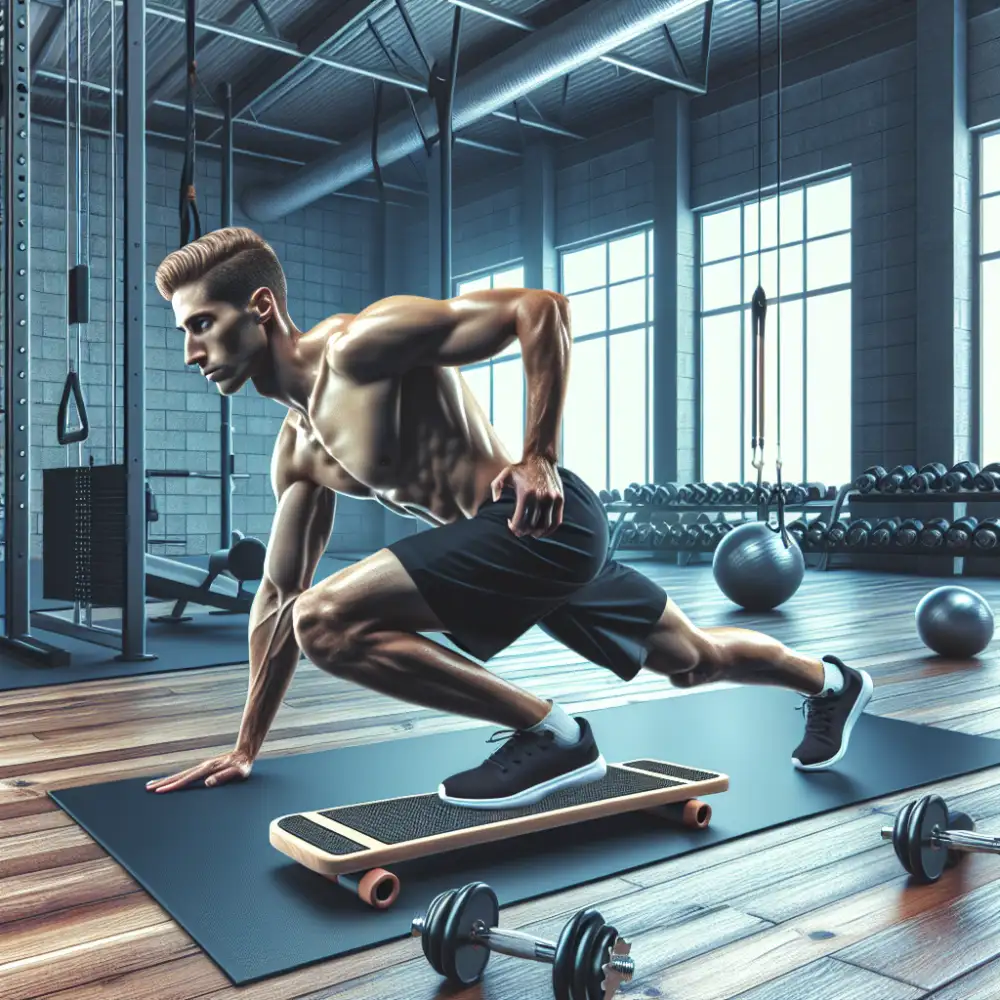
Increase range of motion
The lateral slide is a great exercise for increasing range of motion in your hips and legs. This exercise is particularly beneficial for athletes who need to be able to move quickly and easily from side to side, such as tennis players, basketball players, and soccer players. To perform a lateral slide, stand with your feet shoulder-width apart and your knees slightly bent. Step to the side with one leg, keeping your toes pointed forward and your core engaged. Lower your body down until your trailing knee is close to the ground. Push off with your leading leg to return to the starting position. Repeat on the other side. You can increase the difficulty of the lateral slide by adding resistance with a resistance band or weight vest.
Another great way to increase range of motion is to use a foam roller. Foam rolling is a type of self-massage that can help to release muscle tightness and improve flexibility. To foam roll your hips and legs, lie on your side with the foam roller under your hip. Roll slowly back and forth, pausing on any tender spots. You can also foam roll your quads, hamstrings, and calves.
By incorporating lateral slides and foam rolling into your workout routine, you can improve your range of motion and prevent injuries. Remember to listen to your body and stop if you feel any pain.
Burn calories
The lateral slide is a great way to burn calories and tone your lower body. This exercise works your inner and outer thighs, glutes, and hamstrings. You can do lateral slides with or without equipment. If you are new to this exercise, start with a short range of motion and gradually increase the distance as you get stronger.
To do a lateral slide, stand with your feet hip-width apart and your knees slightly bent. Step to the side with your right foot and then follow with your left foot. Continue stepping from side to side for the desired distance.
You can increase the intensity of the lateral slide by adding resistance. One way to do this is to use a resistance band. Place the resistance band around your thighs, just above your knees. As you step to the side, the resistance band will provide tension, making the exercise more challenging.
Another way to increase the intensity of the lateral slide is to use a weight plate. Hold a weight plate in front of your chest with both hands. As you step to the side, keep your core engaged and your back straight. The added weight will make the exercise more challenging for your muscles.
No matter how you choose to do it, the lateral slide is a great way to burn calories and tone your lower body.
Suitable for all fitness levels
The lateral slide is a great exercise for people of all fitness levels. Whether you're a beginner or a seasoned athlete, you can modify the lateral slide to fit your fitness level and goals. If you're new to exercise, you can start with a shorter range of motion and fewer repetitions. As you get stronger, you can gradually increase the range of motion and repetitions. You can also add resistance by using a resistance band or wearing ankle weights.

The lateral slide is a low-impact exercise, which means it's easy on your joints. This makes it a good option for people who are overweight or obese, as well as people with joint pain.
No matter what your fitness level is, the lateral slide is a great exercise to add to your workout routine. It's a versatile exercise that can help you improve your fitness and achieve your fitness goals.
Lateral slide mistakes to avoid
The lateral slide, a staple in many workout routines, is a fantastic exercise for targeting your inner and outer thighs, glutes, and core. However, like any exercise, it’s easy to fall into bad habits that can reduce effectiveness and even lead to injury. Here are some common lateral slide mistakes to avoid:
- Not engaging your core: A common mistake is letting your hips sag or your back arch, which puts stress on your lower back. Keep your core engaged throughout the exercise to maintain proper form and protect your spine.
- Sliding too far: While you want to challenge yourself, sliding too far can strain your inner thigh muscles and compromise your form. Find a range of motion that feels challenging but allows you to maintain control and proper alignment.
- Sacrificing form for speed: Focus on quality over quantity. Moving too quickly can lead to sloppy form and reduce the effectiveness of the exercise. Maintain a controlled pace, emphasizing proper technique throughout the movement.
- Forgetting to breathe: Holding your breath is a common mistake during any exercise, including lateral slides. Remember to breathe deeply throughout the exercise, inhaling as you slide out and exhaling as you slide back in.
- Using the wrong resistance: Whether you’re using a resistance band or a sliding disc, make sure the resistance level is appropriate for your fitness level. Too much resistance can lead to improper form, while too little won’t challenge your muscles effectively.
By avoiding these common mistakes and focusing on proper form, you can maximize the benefits of lateral slides and work towards stronger, more sculpted legs and glutes. Remember to listen to your body, start slowly, and gradually increase the intensity as you get stronger.
Tips for best results
To get the most out of your lateral slides and prevent injury, keep these tips in mind:
Start slow and gradually increase your range of motion. Don't push yourself too far too fast, or you could risk straining a muscle.
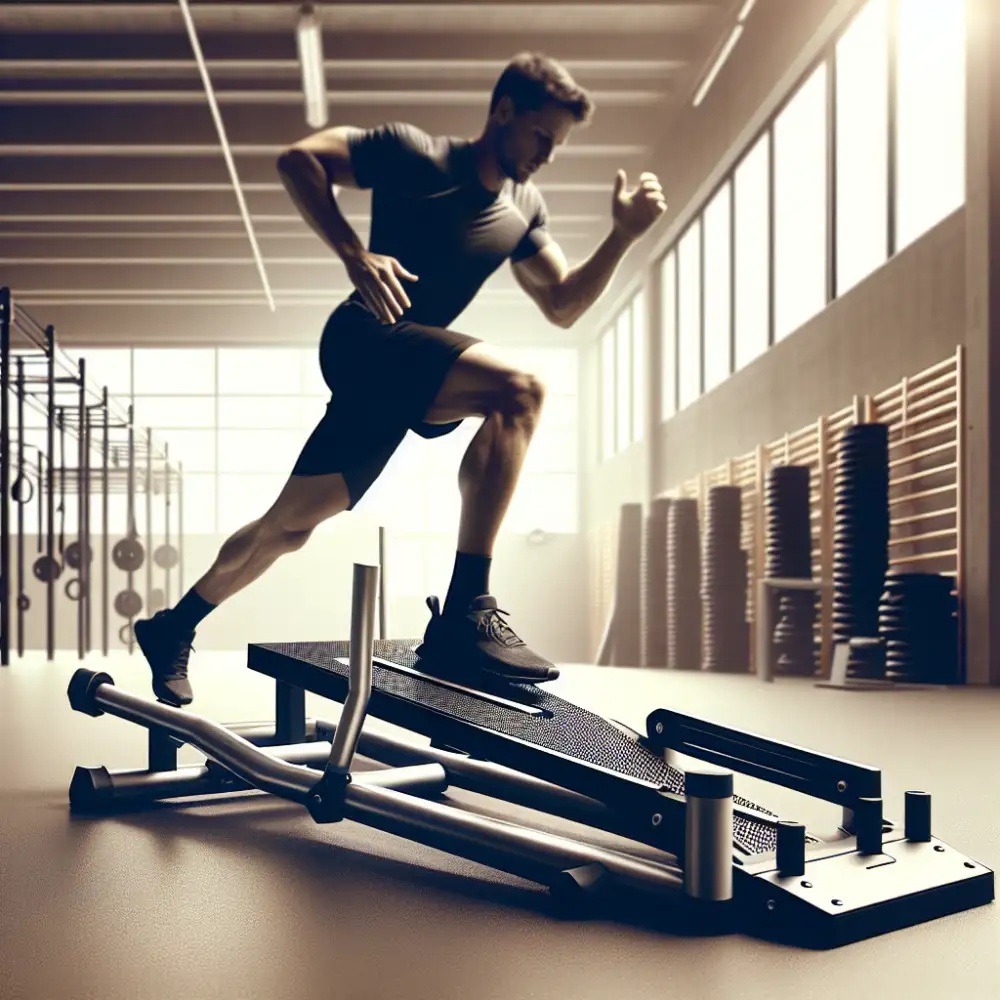
Focus on proper form. Keep your core engaged, your back straight, and your knees slightly bent throughout the exercise. This will help you avoid injury and target the correct muscle groups.
Use a resistance band for an added challenge. As you get stronger, you can increase the resistance to continue challenging your muscles.
Listen to your body and stop if you feel any pain. A little discomfort is normal, but you should stop immediately if you feel any sharp or sudden pain.
Incorporate lateral slides into a well-rounded workout routine. For optimal fitness, include a variety of exercises that target different muscle groups.
Incorporating lateral slides
Lateral slides are a fantastic exercise for targeting your inner and outer thighs, as well as your glutes. They can be performed with or without equipment, making them a versatile option for all fitness levels. To perform a lateral slide without equipment, stand with your feet hip-width apart, toes pointing forward. Lower into a quarter-squat position, keeping your back straight and core engaged. From here, take a controlled step to the side with your right foot, followed by your left foot. Continue stepping laterally for the desired distance or time.
To increase the challenge, you can use a resistance band. Place the band around your thighs, just above your knees. As you step laterally, the band will provide resistance, forcing your muscles to work harder. You can also increase the intensity by increasing the distance of your lateral steps or by adding a weight plate or dumbbell to hold in front of your chest.
When incorporating lateral slides into your workout routine, it's important to start slowly and gradually increase the intensity. Begin with a shorter distance and fewer repetitions, and gradually increase these as you get stronger. Pay attention to your body and stop if you experience any pain.
Frequently asked questions
Lateral lunges work all the major muscles in your lower body, including your quads, glutes, hamstrings, and inner thighs.
To do a lateral slide, stand with your feet hip-width apart and your knees slightly bent. Step to the side with your right foot and lower your body down until your right thigh is parallel to the floor. Keep your back straight and your core engaged. Push off your right foot to return to the starting position. Repeat on the other side.
You can use a few different things for a lateral slide, including a resistance band, a sliding disc, or even just a towel on a hard floor.
Lateral slides can help you burn calories, which can help you lose weight. However, it's important to note that exercise alone is not enough to lose weight. You also need to eat a healthy diet and get enough sleep.
Lateral slides can be good for your knees if they are done correctly. However, if you have any knee pain, it's important to talk to your doctor before doing this exercise.
You can do lateral slides 2-3 times per week. Start with 2-3 sets of 10-12 repetitions on each side. As you get stronger, you can increase the number of sets and repetitions.
Published: 11. 07. 2024
Category: Food

